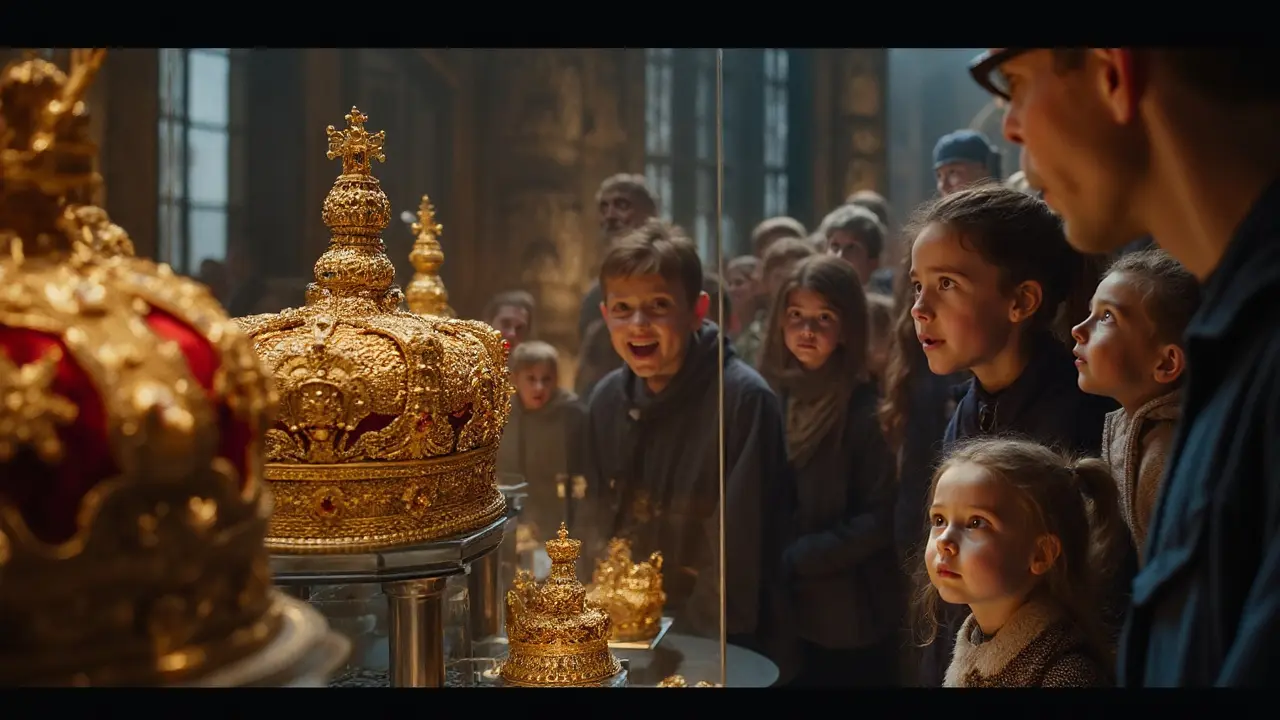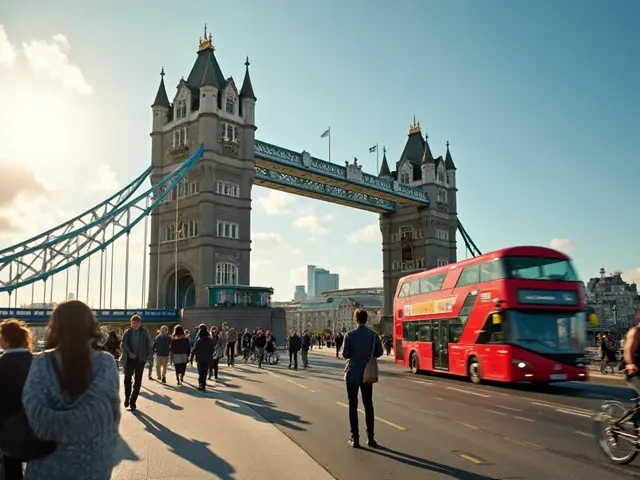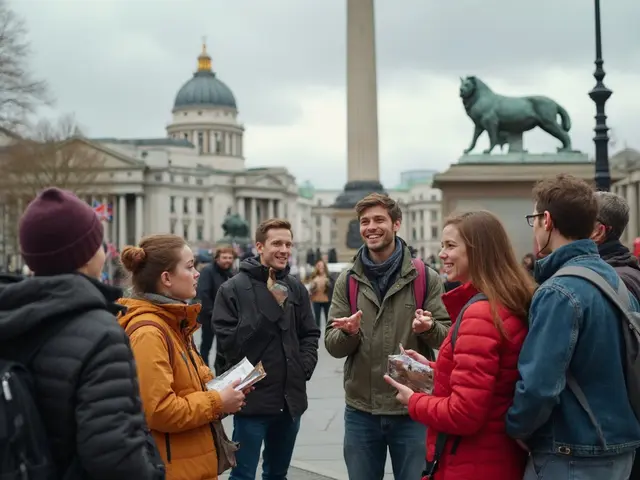Try standing on Tower Hill during a foggy London afternoon, staring at the uneven stones of the Tower of London rising above the Thames. There’s something different in the air—buzzing tourists, yes, but also a whisper about the past that’s impossible to ignore. Whether you live in Camden or commute in from Croydon, everyone in the capital knows this haunting fortress on the edge of the City isn’t just another stop on the London Eye circuit. This place has shaped London’s identity as much as the river itself, mixing stories of monarchy, murder, mystery, and a real-life menagerie. Welcome to a stronghold where the Crown Jewels glimmer behind glass, but darker tales skitter just beneath the surface.
The Origins: A Fortress Built for Power and Protection
The Tower didn’t spring up overnight. Back in 1066, William the Conqueror wanted to show London who was boss after his victory at Hastings. He certainly succeeded, plonking down this white stone keep (now called the White Tower) as an unmissable reminder. The architecture isn’t just for show—those thick lime walls, narrow windows, and squat profile all scream defense. The location is no accident either: perched next to the busy Thames, the fortress keeps watch over London Bridge, the financial district, and whatever foreign threat might row up the river. Locals can still sense the original purpose—security and intimidation.
Over the centuries, English kings expanded and reinforced it. Henry III and Edward I built the outer curtain walls and additional smaller towers you can still wander today. Looking west, you can spot the Traitors’ Gate, infamous as the entrance for doomed prisoners hauled in from the river. Each brick in this place has earned its keep, surviving the London Blitz, fire, and endless attempts to remake the city beyond recognition. There’s a reason it remains one of the country’s best-preserved medieval structures—a stubborn survivor if ever there was one.
Here’s something that might surprise even diehard Londoners: the Tower was once as much a luxury royal palace as a fortress. Kings and queens lived here in considerable comfort, with kitchens preparing feasts from Thames-caught fish, and courtyards bustling with entertainments. Next time you pass through the Byward Tower, try to picture the noise and pomp of a fourteenth-century royal procession—hard to imagine while scanning your Oyster card, right?
If you’re curious about original details, peer at the Norman Chapel of St John, tucked into the White Tower. This is one of the most ancient church interiors you’ll see in the UK, and its stonework has survived nearly a thousand years.
Royalty, Intrigue, and Imprisonment: The Human Stories Inside the Walls
Forget about sanitized palace tours—Londoners know the Tower for its parade of famous, often doomed, residents. This isn’t just a backdrop for gory legends; these were real men and women who helped shape British history. Anne Boleyn, Henry VIII’s ill-fated second wife, was held and ultimately beheaded here. Her ghost is said to haunt the Church of St Peter ad Vincula, still headless, if the Yeoman Warders are to be believed. Tower Green, the patch of grass where several tragic executions took place, is no ordinary lawn—visitors leave flowers there even now.
The Tower served as an actual prison for centuries—there’s a reason the “Bloody Tower” gets its name. Queen Elizabeth I herself was held within these walls by her half-sister Mary Tudor, fearing for her own head. Even Guy Fawkes, of Bonfire Night infamy, spent his last days here under brutal interrogation. If you’re the type who likes shivers, join one of the after-hours twilight tours. Nothing matches the sensation of hearing about the Princes in the Tower—Edward V and his brother Richard—disappearing in 1483, while the moon rises over the old moat.
For a slice of pure royal pageantry and protection, the Tower is also home to the Crown Jewels, glinting beneath their glass cases. This collection is a national obsession, especially for anyone who watched the 1953 coronation of Queen Elizabeth II (if you weren’t around—check out BBC’s newsreels of the event in the Museum of London or browse the British Pathé films online). The Imperial State Crown, topped with the Cullinan II diamond, usually only comes out for big occasions, but anyone queuing in the Waterloo Block can see it up close. Tour tip: visit early in the morning or late in the afternoon—locals dodge the coach tours that clog up the queues midday.
Crime and punishment are etched in every corner. Many Tower inmates left desperate graffiti scratched into stone—check out the saltire crosses and prayers in the Beauchamp Tower made by 16th-century prisoners. The Yeoman Warders, better known as Beefeaters, guide visitors past these marks, often sharing unscripted, cheeky stories. These guides are worth listening to: every Beefeater is a former military member with at least 22 years’ service. Some have stories nearly as wild as the Tower’s own past.

The Tower’s Dark Side: Myths, Hauntings, and Brutal Realities
For lots of Londoners, it’s the Tower’s reputation for darkness that lures them in. Those looming turrets aren’t just tourist magnets—they’re stage props for centuries of rumour. Tales of ghosts swirl just as thick as the city’s December fog. Anne Boleyn’s spectral form is the most famous, but she isn’t alone: they say Lady Jane Grey, the nine-day queen, still drifts along the battlements. If you ask a Yeoman Warder late in the day, they might mention the headless spook of Sir Walter Raleigh, who’s said to wander near the Bloody Tower. Never mind special effects—these are legends you’ll hear retold at Tower of London Nightwatch events and in local podcasts like “Haunted London.”
No modern horror film matches the real-life stories from these walls. Public executions, at first carried out on Tower Hill for crowds, later moved inside for more discretion—often only a select circle of court watched. This wasn’t just a grim perk for the rulers; it was also a brutal warning to London’s rebels. Here’s a number for you: according to records, 112 people were executed in the Tower between 1388 and 1941. Of those, only seven were women—mostly queens or suspected royal traitors.
The Tower even held zoo animals. From lions and leopards to a polar bear gifted in 1252, the Royal Menagerie became famous across Europe. In fact, locals once paid to watch the creatures perform. The bear even fished for food in the Thames! The animals were moved to Regent’s Park (now London Zoo) in the 1830s, but eagle-eyed visitors can still hunt for old cages and carvings if you head towards the Fusiliers’ Museum. It feels wild to think about giraffes peering out over these stone ramparts, but that’s just another bit of London’s wonderful weirdness.
Of course, not every myth is quite as it seems. The ravens—a true Tower tradition—don’t stay just out of superstition, but because Charles II, after the Restoration, heard that if the birds ever left, the kingdom would fall. So, six ravens (plus a spare) have their wings clipped and enjoy living it up with daily meat feasts from the Ravenmaster. Local schoolchildren on field trips still love finding these chunky birds wandering the lawns, sometimes mugging tourists for chips. Nothing could be more London.
“When you get inside these walls and the crowds fade, you can almost hear the heartbeat of London itself.” — Dan Snow, historian, on BBC2’s ‘The Secrets of the Tower’
| Century | No. of Executions | Notable Victims |
|---|---|---|
| 15th | 24 | Edward Plantagenet, Anne Neville |
| 16th | 34 | Anne Boleyn, Lady Jane Grey, Lord Guildford Dudley |
| 17th | 19 | Guy Fawkes, Sir Walter Raleigh |
| 20th | 6 | Nazi spies |
Planning Your Visit: Tips for Locals and Londoners-in-the-Know
If you’re thinking about visiting, don’t treat it like just another tourist spot. London’s relationship with the Tower is ongoing—many locals pop back for concerts in the moat during the summer (check out the Tower of London Festival), or ice skating sessions beside the ramparts in winter. Buy tickets ahead online for big events to dodge the queues. Remember, Londoners get discounted entry with their postcode—check the Historic Royal Palaces website for details.
Eat before you go, or bring a picnic—café prices inside can hit Central London highs, and there are tastier options just outside. Try a salt beef bagel at Beigel Bake in Brick Lane or get a proper pie at Mother Mash, a quick stroll towards Spitalfields. And if you fancy learning about old London pubs, The Hung, Drawn & Quartered next to Tower Hill is legendary for post-tour debates (and local ales).
The White Tower is the centerpiece, so don’t speed through it. Look for the 11th-century suits of armour, weapons from the English Civil War, and the dazzling Line of Kings exhibition. Parents: kids get a kick out of the interactive sword fights in summer, but it’s worth checking the tower’s events calendar before you make your plans, because the educational workshops are often free and fill up quickly.
Those with a real love of *London landmarks* will know to look beyond the basics. Book onto a Yeoman Warders’ tour—they’re free with entry and bring out salty banter and little-known facts. If you hate crowds, late afternoon is usually quieter. The Tower has excellent step-free access, though Norman stairs can be tricky for prams and wheelchairs. The London Underground’s Tower Hill station brings you right to the main entrance, but the Thames Clipper river boats add a dramatic arrival—especially at dusk.
Finally, if you’re already familiar with the city’s major sights, look out for Secret London or Time Out’s annual offbeat history days. Occasionally, the Tower opens up rarely-seen spots like the Queen’s House or the Royal Armouries stores for a real behind-the-scenes look. Local tip: if you can, sign up for a Tower event during the Lord Mayor’s Show in November—it’s an unbeatable city tradition, and the Tower’s role as the backdrop makes it one of London’s most atmospheric days out.



